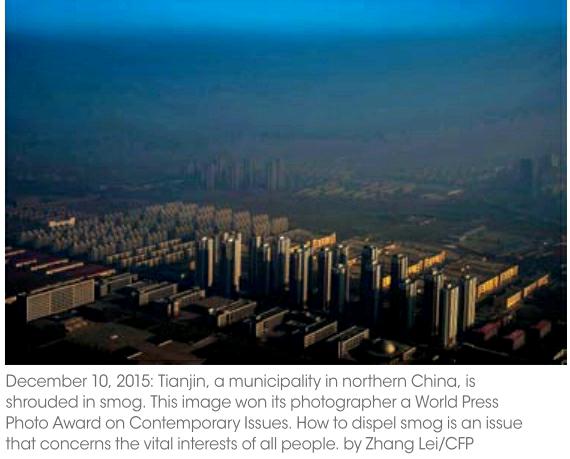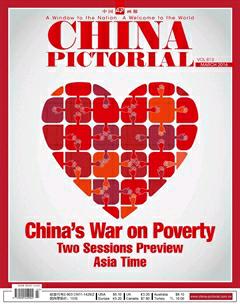Predicting Hot Topics of The Two Sessions
by+Zi+Mo
This year marks the beginning of Chinas 13th Five-Year Plan (2016-2020), a critical period that may decide whether the nation can achieve its goal of building a moderately prosperous society in all aspects by 2020. Due to economic downturn pressure during its “new normal” period, China faces various challenges in pushing forward its structural reform this year.
In March, China will hold its annual “two sessions” of the National Peoples Congress (NPC) and the National Committee of the Chinese Peoples Political Consultative Conference (CPPCC), which will review major issues concerning the national economy and social development and promulgate a series of policies for the future development of China, the worlds second largest economy.
What will be the hot topics of the two sessions? What results do people most want to see? Wed like to share a few of our predictions.
Supply-side Reform
“Supply-side reform” has been a buzzword since early November 2015, when Chinese President Xi Jinping first mentioned it at a top-level economic conference. Chinese policymakers are now pivoting towards the “supply side,” as an antithesis to the long-favored Keynesian demand-side management. The supply-side reform aims to upgrade Chinas economy through liberalizing productivity and enhancing competitiveness. From a short-term perspective, its purpose is to relieve pressure from the economic slowdown. For the long-term, it eyes solving contradictions between supply and demand and improving the quality and efficiency of Chinas economic growth through structural reform. Understandably, exactly how to build a new economic structure through supply-side reform will be a hot topic at the upcoming two sessions.
Poverty Reduction
Over the past three decades since it launched reform and opening-up, China has maintained a rapid economic growth and made tremendous achievements in poverty reduction. According to the World Banks poverty line of US$1 a day, the country has lifted more than 700 million out of poverty in the past 30 years. China has set a goal to help all of its impoverished rural population out of poverty by 2020. In view that the country still has nearly 70 million people living below the poverty line, it is a daunting task to achieve the goal. In the next few years, China will endeavor to eliminate overall regional poverty through implementing the strategy of government-led precision poverty reduction while allowing the participation of market entities, nongovernmental organizations and individual citizens and encouraging the poor to enhance their own development capacity.

Increasing Farmers Incomes Through Industrial Integration
Per capita income of Chinese farmers grew at an average annual rate of 9.5 percent over the past five years. However, their incomes are still comparatively low and unequal. In early 2016, the Central Committee of the Communist Party of China (CPC) and the State Council jointly issued the No.1 document that focuses on issues about agriculture, farmers and rural areas, according to which the country will leverage the unique advantages of rural areas, deeply explore the diverse functions of agriculture, foster new industries and sectors in rural areas, and make industrial integration key support for farmers to increase their incomes. “The industrialization of agriculture is a significant solution to move along agricultural restructuring,” notes Li Guoxiang, a researcher at the Rural Development Institute under the Chinese Academy of Social Sciences.
Real Estate Destocking
With Chinas economy in a “new normal” period, demand for real estate has begun to drop, especially in second and thirdtier cities. According to the National Bureau of Statistics, Chinas vacant commercial housing hit a new high at nearly 700 million square meters by November 2015. At the Central Urban Work Conference held at the end of 2015, real estate destocking was declared one of the five major tasks for the countrys structural reform. Policies such as dropping down payment ratios and including migrant workers in the housing accumulation fund system have been formulated to boost real estate sales. Experts believe that real estate destocking will not only foster economic growth, but also promote people-oriented urbanization through providing housing for migrant workers and facilitating their permanent settlement in cities.
Nationwide Pension Management
At the National Finance Work Conference held at the end of 2015, Chinese Minister of Finance Lou Jiwei announced that the nation would improve its top-level design for pension insurance and formulate a plan for nationwide basic pension management in 2016. According to experts, if the plan is implemented, Chinese people will be able to easily transfer their pension insurance to any job in different regions. Moreover, the plan will enable nationwide allocation of pension funds, thus changing regional imbalance in pension insurance revenues and expenditures.

Two-child Policy
In October 2015, the Fifth Plenary Session of the 18th CPC Central Committee passed a decision to allow couples to have a second child. The two-child policy officially went into effect on January 1, 2016, after the NPC passed the revised Population and Family Planning Law. Against a backdrop of a shrinking working-age population and rising pressure on social provision for the elderly, the policy is considered an important measure to promote demographic balance and address the problems of the rapidly aging society. However, the new policy might not produce the desired results without more supportive measures, such as expanded education, lower cost of parenting, and services for the elderly. Supportive measures will be a hot topic at the upcoming two sessions.
Easier Settlement in Cities
At the National Conference on Development and Reform, Xu Shaoshi, chairman of the National Development and Reform Commission, revealed that China would formulated a plan to enable 100 million rural residents to settle in cities through reforming its hukou (household registration) system, enabling migrant workers from rural areas to receive social services in cities. Furthermore, the Central Economic Work Conference also passed a decision to allow migrant workers from rural areas to register their hukou in cities where they work. This measure will let migrant workers enjoy the same treatment and privileges as urban residents, a move to promote social fairness.
Coordinated Smog Control
In 2015, Beijing witnessed blue skies during its Victory Day parade. That year, however, it also launched red alerts twice due to extremely severe air pollution. In fact, smog has been a universal problem that residents in many Chinese cities suffer. In view that air pollution is usually transmitted across regions, smog control requires coordinated efforts across regions. So far, the most smog-plagued regions such as Beijing-Tianjin-Hebei region and the Yangtze River Delta have all formulated a coordination mechanism for curbing air pollution. How to dispel smog and maintain blue skies is an issue concerning the vital interests of the people.
“Belt and Road” Initiative and Industrial Capacity Cooperation
The Silk Road Economic Belt and the 21st Century Maritime Silk Road (collectively known as the Belt and Road Initiative), proposed by China in 2013, have entered the phase of implementation. In 2015, China signed memoranda or intergovernmental agreements on the Belt and Road Initiative with more than 20 countries, and similar documents on industrial capacity cooperation with 17 countries. Through promoting international industrial capacity cooperation in realms such as rails, countries involved in the Belt and Road Initiative will enhance interconnection. In this way, China and other relevant countries can promote interest integration, deepen mutual trust, and form a community of shared destiny.
Financial and Stock Market Reform
In 2015, China hastened its pace of financial reform. Several months after introducing a deposit insurance system in the first half of 2015, the nation announced it would remove the cap on deposit rates, a substantive step toward interest rate liberalization. The RMBs recent inclusion into the special drawing right (SDR) basket was an important move for the internationalization of the currency. Although the Chinese stock market fluctuated sharply in 2015, its reform was deepened. For instance, the threshold for information technology and internet companies to be listed on the stock market has been lowered. The IPO examination and approval system of the Chinese stock market is expected to be replaced by a registration system in 2016. Essentially, all measures concerning the reform of the financial and stock markets aim to boost the development of the real economy.

